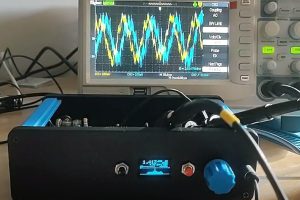Nitrates, for example, are measured using simple chemistry-based test kit.
But pesticides need a combination of chromatography and mass spectrometry and cannot be tested in the field by an expert, let alone a citizen scientist.
Part of the problem, it seems, is that pesticides are not one thing, but potentially hundreds of chemicals.
So that we can feed some information back, the question to you, dear reader, is:
Do you know of any organisation that has any sort of electronic pesticide sensor in the pipeline?
As well as one day allowing on-the-spot pesticide assays, such a thing might allow permanent monitors to be set up.
After all, there are a number of medium-distance wireless mesh technologies – built on the lower layers of LoRaWAN, for example – that could cheaply communicate with such environmental sensors, at such low power that these things could run for months on a battery, or forever on a solar cell, if the sensors did not consume too much.
 Electronics Weekly Electronics Design & Components Tech News
Electronics Weekly Electronics Design & Components Tech News




